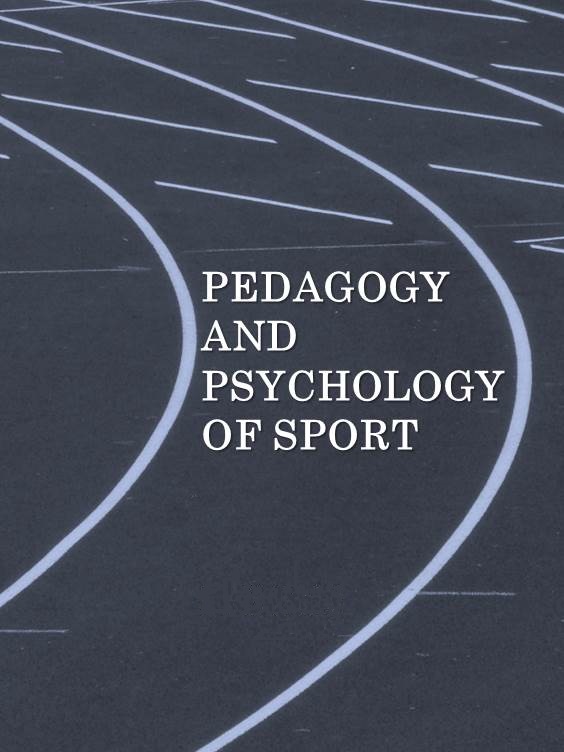Effects of fitness programs with aquatics elements on physical condition of 16-17 year-old males
DOI:
https://doi.org/10.12775/PPS.2019.05.02.002Keywords
program, effectiveness, aquatics, young males, rowing, physical condition.Abstract
The article identifies the impact of an aquatics fitness program on the physical condition of 16-17-year-old males. Objective. The study was aimed at assessing the effects of the fitness program with aquatics elements on physical condition of 16-17 year-old males. Methods and organization of the study. The following methods were used: analysis and generalization of special scientific and methodological literature; pedagogical, sociological, anthropometric, and physiological methods; and the methods of mathematical statistics. To assess physical health, Apanasenko’s method for somatic health express assessment was used. The level of physical fitness of young men was assessed according to the Krutsevich’s method. The Ruffier, Robinson, Skibinsky, Stange, and Genche indices were used to assess the functional status of the cardiorespiratory system. The program lasted for 9 months with workouts done three times a week. The program included three stages: preparatory (10-12 weeks), main (16-18 weeks), and final (14-16 weeks) ones. The study involved 48 males aged 16-17 years. Results of the study. After the experiment, significant (p <0.05) changes were found in the morpho-functional status of 16-year-old men including body weight, heart rate, lung vital capacity, Stange and Genche tests, Ruffier, Skibinsky, and Robinson indices, and vital capacity-to-body weight ratio. In 17-year-old men, the changes in Robinson, Skibinsky, and Quetelet indices, as well as in wrist dynamometry and strength index were found. The results of Ruffier test indicated improvements in physical performance and physical fitness of young men. The physical health of most young men aged 16-17 was improved to the ‘safe’ level. Conclusions. The effectiveness of the aquatics program was proved. Significant changes were found to occur in the following indicators of physical condition of young men: physical fitness, physical health, work capacity, and morphofunctional condition.References
American College of Sports Medicine (2011). Position stand. Quantity and quality of exercise for developing and maintaining cardiorespiratory, musculoskeletal, and neuromotor fitness in apparently healthy adults: guidance for prescribing exercise. Medicine and Science in Sports and Exercise, 43(7), 1334-1359.
Aranceta, J., Serra, L., Foz-Sala, M. & Moreno, B. (2005). Prevalencia de obesidad en España. Medicina Clínica, 125, 460-466.
Balkó, Š., Balkó, I., Valter, L., Jelínek, M. (2017). Influence of physical activities on the posture in 10-11 year old schoolchildren. Journal of Physical Education and Sport, 17(1), 101-106.
Bolotin, A., & Bakayev, V. (2015). Structure and content of the educational technology of managing students’ healthy life-style. Journal of Physical Education and Sport, 15(3). 362-364.
Brusseau, T. A., & Hannon, J. C. (2015). Impacting Children's Health and Academic Performance through Comprehensive School Physical Activity Programming. International Electronic Journal of Elementary Education, 7(3), 441.
Brusseau, T. A., & Kulinna, P. H. (2015). An examination of four traditional school physical activity models on children's step counts and MVPA. Research Quarterly for Exercise and Sport, 86(1), 88-93.
Brusseau, T. A., Hannon, J., & Burns, R. (2016). The effect of a comprehensive school physical activity program on physical activity and health-related fitness in children from low-income families. Journal of Physical Activity and Health, 13(8), 888-894.
Burns, R. D., Brusseau, T. A., & Fu, Y. (2017). Influence of Goal Setting on Physical Activity and Cardiorespiratory Endurance in Low-Income Children Enrolled in CSPAP Schools. American Journal of Health Education, 48(1), 32-40.
Duncan, J.S., Badland, H.M. & Schofield, G. (2009). Combining GPS with heart rate monitoring to measure physical activity in children: a feasibility study. Journal of Sports Science and Medicine, 12(5), 583-585.
Durant, R.H., Baranowski, T., Davis, H., Rhodes, T., Thomson, W.O., Graves, K.A. & Puhl, J. (1993). Reliability and variability of indicators of heart rate monitoring in children. Medicine and Science in Sports and Exercise, 25, 389-95.
Ekelund, U., Poortvliet, E., Yngve, A., Nilsson, A., Hurtig-Wennlof, A., & Sjostrom, M. (2001). Heart rate as an indicator of physical activity intensity in adolescents.Medicine and Science in Sports and Exercise, 33(5), Supplement abstract 1406.
Pate, R.R., Flynn, J.I, Dowda, M (2016). Policies for promotion of physical activity and prevention of obesity in adolescence. Journal of Exercise Science&Fitness,14(2),pp.47-53. https://www.sciencedirect.com/science/article/pii/S1728869X1630154X
WHO (2008). El aumento de la actividad física reduce el riesgo de enfermedades cardíacas y la diabetes.New York: World Health Organization. http://www.who.int/dietphysicalactivity/PAguide-2007- spanish.pdf
Andrieieva O.V (2014). Physical recreation of different population groups. K.: Polygraphservice: 280 s.
Kovaleva N.V, Andrieieva O.V (2011). Problems of activation of recreational and recreational activities of high school students in their free time. Science. magazine Nat. ped. to them. MP Dragomanov. 2011: [vol. 7, Avg. 15] P. 8-13.
Krutsevich T.Y., Vorobiov M.I, Bezverkhnya G.V. (2011). Control in the physical education of children, adolescents and young people: Educ. tool. K.: Olymp. Literature. 2011: 224 s.
Skalski D., Lizakowski P., Nesterchuk N., Grygus I. (2018). Klasowe i warstwowe uwarunkowania uczestnictwa w sporcie a edukacja zdrowotna. Reabilitatsiini ta fizkulturno-rekreatsiini aspekty rozvytku liudyny=Rehabilitation & recreation. Rivne, 2018. 3. Р. 132-138.
Skalski D., Formela M., Grygus I., Nesterchuk N., Tuz M., Kowalski D., Glazik R. (2018). Sposoby przeciwdziałania zachowaniu dewiacyjnemu w sporcie, a edukacja zdrowotna. Bezpieczeństwo i zdrowie. Wybrane zagadnienia. – Gdynia-Gdańsk-Starogard Gdański, 2018. S. 69-82.
Downloads
Published
How to Cite
Issue
Section
License
The periodical offers access to content in the Open Access system under the Creative Commons Attribution-NonCommercial-ShareAlike 4.0
Stats
Number of views and downloads: 633
Number of citations: 0



